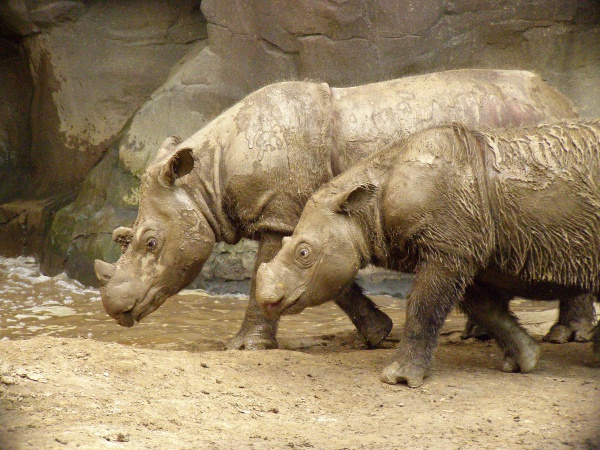Facts About Sumatran (Two-horned) Rhinoceros
The Sumatran rhinoceros, also known as the hairy rhinoceros or Asian two-horned rhinoceros, is a rare and fascinating member of the rhinoceros family. It is one of five living rhino species and the sole remaining species in the *Dicerorhinus* genus. This diminutive rhino is the smallest of all rhino species, standing about 112–145 cm tall at the shoulder. It measures approximately 2.36–3.18 meters in length, with a tail that adds another 35–70 cm, and it weighs between 500 and 1,000 kg. One of its most distinctive features is a coat of reddish-brown hair covering much of its body, along with two horns, the larger of which is typically 15–25 cm long.
Historically, Sumatran rhinos roamed across a vast range in Asia, from India and Bhutan to Myanmar, Laos, Thailand, Malaysia, Indonesia, and even China. Unfortunately, they are now critically endangered, with only five major populations left in the wild, mainly in Sumatra and Borneo. These rhinos are known for being solitary creatures and communicate with each other through vocalizations and unique marking behaviors. Conservationists are working tirelessly to save them, including through captive breeding programs, although breeding them in captivity has proven to be quite challenging. Consequently, recent efforts have focused on tracking and monitoring the remaining populations in Indonesia and Malaysia.
The naming and classification of the Sumatran rhino have evolved over time. Today, it is officially named *Dicerorhinus sumatrensis*, and there are three recognized subspecies: the western Sumatran rhinoceros, the Bornean rhinoceros, and the northern Sumatran rhinoceros. Genetic studies have revealed distinct lineages within these subspecies, and scientists are working diligently to preserve their genetic diversity.
Sumatran rhinos are voracious eaters, consuming young saplings, leaves, twigs, and shoots, with a daily intake of up to 50 kg of food. They also rely on salt licks for nutrition and social interactions. These rhinos are quite vocal, using a range of sounds to communicate for various purposes. Their reproduction involves complex courtship behaviors and mating rituals, with a lengthy gestation period of around 15–16 months.
Conservation is critical for the survival of the Sumatran rhino. They face severe threats from poaching, habitat loss, and conflicts with humans. While captive breeding programs have had limited success, mainly due to difficulties in breeding and maintaining populations in captivity, efforts to raise awareness about their plight continue. Culturally, the Sumatran rhino holds significant value and has been featured in various documentaries. Despite all these efforts, the Sumatran rhino remains critically endangered, with fewer than 100 individuals believed to be left in the wild.

 Myanmar (Burma)
Myanmar (Burma)